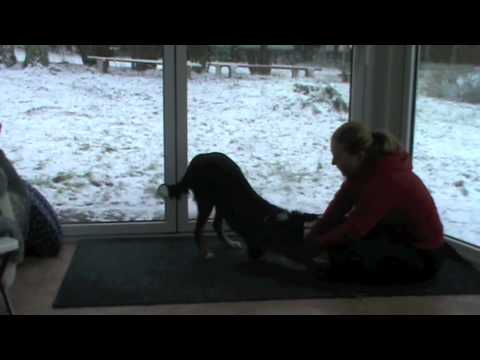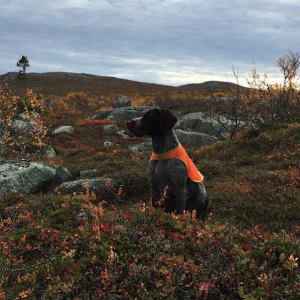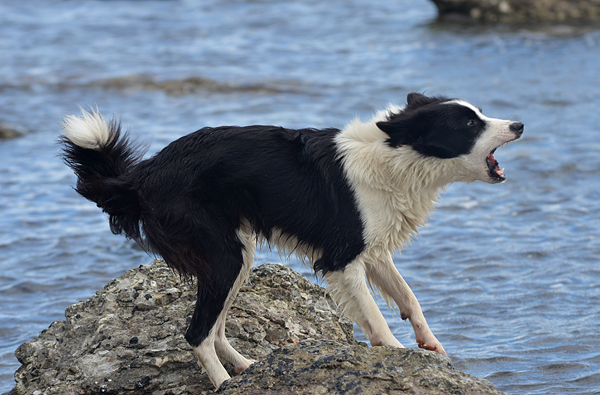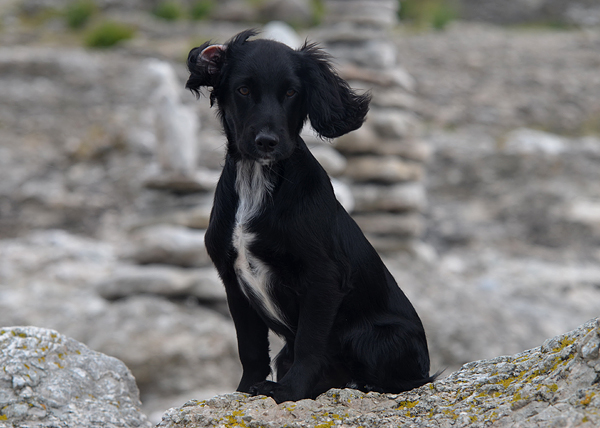
Shaping, luring, prompting….
I read and enjoy Patricia B. McConnell’s blog about animal training and what goes on at her farm. This week, the topic of shaping came up for discussion. I have so much to say about this topic that I thought it best to write a blog post instead of a long comment. In this blog post, I’m discussing shaping from a dog trainer perspective, as I don’t train other species much. I realise that this post will discuss a lot of things not at all mentioned in the original post, so it’s not at all a criticism of the blog post, just my thoughts on the practical applications of different modes of instruction in teaching dogs new things.
Definitions are hard! I feel like I don’t even want to get into a lengthy discussion on the correct terminology. Some people will argue that it is only true shaping if you sit on a chair, or always reward away from the direction of the behavior, and if I understand this article by Karen Pryor correctly, it’s not shaping but successive approximation if you make the behavior easier to accomplish when you begin training. If that is the case, I very rarely use shaping. And I don’t think anyone does seriously. So it’s not very interesting to discuss then, is it?
This is a clip (in fast forward to fit on Instagram) from Bud’s first session of weaving. I would definitely call it shaping even though I move, reward in the direction of the behavior and make the behavior easier by using only two poles and opening them up to begin.
What do I mean by shaping
What is interesting to discuss is where there actually is a difference in training. I realise now that my definition of shaping is fairly broad, yet I find it more useful for discussion. This is how I would define the training that I use that I sloppily define as as shaping:
- Reward based – no verbal or physical corrections. (Of course, I can see how you could shape a behavior using negative reinforcement as well, it’s just not what I mean when I say I use shaping).
- Builds on the dog’s own initiative. The dog is actively offering behavior in order to get the reward. He is not waiting for a command, prompt or lure.
- Behaviors are split into smaller building blocks to make it easy for the dog
There are a lot of things that could be added to that list, but I find that many of them are in the “often, but not always” category for me. That would for example include the use of a marker signal. I do use a marker signal most of the time – because it helps my timing. But sometimes I can deliver the reward with perfect timing – for example by throwing a treat over the dogs head as he is focused forward, which makes a marker signal unnecessary or even distracting (because the dog might orient towards the sound and look back to me instead of keeping his focus forward).
In that category, I would also place that wrong responses are just ignored and the dog tries again. This is what I most often do, but sometimes I need to call the dog back to me for a new repetition if he makes the wrong choice. Most of the time though, wrong responses are met with no reaction and the dog just tries again. It is not followed by a verbal correction or by the immediate help from a cue, prompt or lure.
Here is an example of a puppy learning to sit up from down in about 3 minutes:
What’s the big difference?
The big difference from other methods of training is the emphasis on the dog offering behavior. This is what, in my mind, separates shaping from a method based on luring or prompting. This is what I find makes a huge difference in the way the dog learns and performs. If the dog and trainer team are skilled with the offering of behavior, it doesn’t matter at all if you sometimes use help (lure, prompt, target) to get a behavior started. As soon as the dog gets the idea, he will offer the behavior if you just wait, and there will be no need to gradually fade the help. At least, that is my experience. On the other hand – when dog and trainer are skilled with shaping, there is rarely need to use that kind of help.
Why is it important that the dog offers behavior? To me – it’s about the long term effects and the influence it has on the teamwork with my dogs. If someone handed me a puppy and asked that it would spin clockwise on cue tomorrow, I’d most certainly use a lure to get the behavior. Luring is probably a faster way to teach that kind of moderately-difficult-but-easy-to-lure behavior (if they asked for a sit or down I wouldn’t lure because that just seems like more work) with a dog that has no prior experience with training.
With my own puppies, there are lessons much more important than getting them to spin. My focus is on what makes them great training companions in the future and for the rest of their lives, not what gets me behavior fastest right now. I know that if I teach them to offer behavior, actively work to get rewards and try again if they fail, they will learn behaviors in no time in the future. They will also learn other very important skills, like:
- I will not ask you to work, you have to engage me to get rewards – leads to a dog that will be focused and driven.
- There is nothing bad about not getting a reward you were hoping for, just try again and try harder – leads to a dog that doesn’t find it strange to work for longer periods of time without being rewarded, and that doesn’t get frustrated or worried when rewards are not coming.
- If you want something in life, try to impress me – leads to a dog that will look to work with me in the face of distractions
What do I mean by offering?
A dog trained by me will definitely offer behavior if we’re in a training situation and I don’t say anything to them. Some situations have default behaviors – like coming to heel if I stand or walk straight and competition like. In other situations, they might just offer something we recently trained or something they enjoy a lot. I don’t really expect them to be super creative. I will not just sit and stare at them and hope that they will offer something new out of the blue. Splitting behavior into small pieces and planning my sessions well means that I very quickly will get them on the right track. I will reward very simple behaviors to get the session started (for example just standing in front of me, or looking at an object, or lying down). The dog is not really offering much, I’m capturing a starting point. I will not raise the criteria and expect the dog to do something more until he is repeating the first behavior. Once he is on the right track, I can usually raise criteria quite quickly in small but frequent steps.
A puppy, or dog new to training is never expected to offer anything at all. I capture behaviors – small, small pieces of what I want, until I see the dog repeating them in order to get a reward. Dogs do a lot of things all the time – we just need to be good observers and have good timing. I think that one reason why my dogs rarely show any frustration is that I really don’t expect anything from them. If they need time to think, I’m fine with that. It doesn’t stress me out, so my dogs aren’t stressed about it either.
Offering never stops
I add a cue to behaviors that I shape when the dog repeats the behavior happily and isn’t dependent on my position, reward placement or the environment. I like my dogs to be good at responding to cues, to wait for cues and to differentiate between cues, so I work on it a lot. But I never take away the offered behavior. Any behavior that my dog has learned can easily be offered if I need it. This is for a number of reasons, for example:
- If I want to work on some technical aspect of the behavior (not related to stimulus control), I want to be able to do it without using the cue. It gives me a better flow, and if there’s something I don’t like about the way my dog performs the behavior at the moment, I don’t have to pair my cue with that behavior until it’s perfect again.
- If I want to add an element of difficulty, like distance, from movement or duration. My dog might be great at “sit” when he’s in front of me. That does not mean that he will do it on a distance. Taking the cue away and working on offered behavior makes sure that I don’t associate the cue with frustration when I ask for it in a new situation. The dog gets to offer the behavior until it’s fluent in the new situation, and then I add the cue back in as a “green light”.
- If I want the behavior as a starting point for shaping another behavior. I might for example want my dog to learn to crawl. If I have to ask my dog to lie down to get started, I have a problem. My “down” cue means lie down and don’t move until I release you, so I don’t want to use that when shaping a crawl. An offered down (and no release) is a much better starting point!
- If I want the behavior as a starting point for a chain or sequence. I like my dogs to “ask to work”, so I like any chain to start with an offered behavior of some sort. It might be that the dog offers heel position for me to start an obedience chain, or maybe that the dog offers a sit in order to get to work on holding a dumbbell. This also makes sure that I know that my dog is motivated and ready to work before I ask something of him.
Conclusion
It is difficult to write about this, because the subject is huge. My point is that I think the big difference is not in what techniques you use to get behavior started (even though it makes a difference if you’re always luring and never capturing), but in how much the dog offers behavior that is not cued or prompted in training.
If you are interested in my way of training, or in improving your shaping skills, I will be at PosiDog in Columbus, Ohio on March 5-6 to teach on the subject of shaping. I will bring my dog Epic with me, and we’ll show you how efficient and fun this type of training can be. I really look forward to it!









